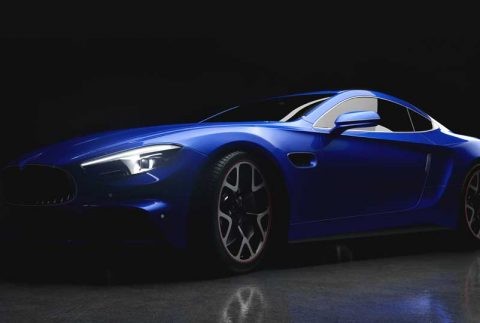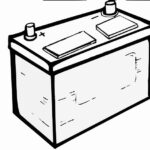Car window tinting is a popular upgrade for vehicle owners looking to enhance aesthetics and functionality. The sleek, cool appearance of tinted windows is undeniable, and beyond looks, tinting offers benefits like increased privacy, UV protection, and reduced glare. If you’re considering joining the ranks of drivers enjoying these advantages, one of your first questions is likely, “How Much To Tint Car?”
Understanding the cost of car tinting is crucial for budgeting and making informed decisions. While the desire for a stylish, shaded ride is strong, it’s important to know that the price can vary significantly based on several factors. This guide breaks down what influences the cost of car tint, helping you understand what to expect and how to get the best value for your investment.
Factors Influencing Car Tint Cost
The price of tinting your car windows isn’t a fixed number. It’s determined by a combination of elements, each contributing to the overall cost. Being aware of these factors will empower you to understand different quotes and choose the best option for your needs and budget.
Type of Tint Film
The most significant factor affecting the cost is the type of window tint film you choose. Different tint films offer varying levels of performance, durability, and aesthetic appeal, which directly impacts their price. Here are some common types and their general price ranges:
-
Dyed Window Film: This is the most basic and budget-friendly option. Dyed film uses dyes to darken windows, primarily offering cosmetic benefits and some glare reduction. However, it provides minimal heat rejection and UV protection, and can fade over time. Price range: Generally the lowest cost option.
-
Metallic Window Film: These films contain metallic particles that reflect heat and UV rays, offering better performance than dyed films. They are more durable and provide improved heat rejection. However, metallic films can sometimes interfere with electronic signals like GPS and radio. Price range: Mid-range, slightly more expensive than dyed films.
-
Carbon Window Film: Carbon films are a step up in quality, utilizing carbon particles to block infrared heat. They offer excellent heat rejection, UV protection, and a stylish matte finish without signal interference. Carbon films are more color-stable and long-lasting than dyed or metallic options. Price range: Mid to upper range, more expensive than metallic films.
-
Ceramic Window Film: Considered the premium option, ceramic films use ceramic nanoparticles that offer superior heat rejection, UV protection, and glare reduction without being metallic, thus avoiding signal interference. Ceramic tints are the most durable, longest-lasting, and provide the best overall performance. Price range: The most expensive option, but offers the highest performance and longevity.
Car Size and Number of Windows
The size of your vehicle and the number of windows that need tinting will naturally influence the total cost. Larger vehicles like SUVs or minivans with more extensive window areas will require more film and labor, leading to a higher price compared to a smaller sedan or coupe.
Quality of Tint Film and Brand Reputation
Just like with any product, the quality of the window tint film varies significantly between brands and product lines. Reputable brands invest in research and development to produce high-quality films that offer superior performance, durability, and warranties. Lower-end, unbranded tints might seem cheaper upfront, but they often lack the same level of performance, may fade or peel quickly, and offer little to no warranty, potentially costing you more in the long run. Investing in quality films from well-known brands ensures better results and long-term satisfaction.
Professional Installation vs. DIY
While DIY tint kits are available, professional installation is highly recommended, and this will factor into the overall cost. Professional installers have the expertise, tools, and controlled environments to apply tint flawlessly, avoiding bubbles, creases, or imperfections. DIY attempts can often lead to unsatisfactory results and wasted film, potentially costing more to rectify with professional help later. Professional installation costs include labor, but ensure a quality finish and often come with warranties on the installation itself.
Geographic Location
Labor costs vary across different geographic locations. Areas with higher costs of living typically have higher labor rates for professional tint installation. Therefore, the price to tint your car might differ depending on your city and state.
Warranty
Window tint warranties protect you against defects in the film, such as bubbling, peeling, cracking, or fading. Films with longer and more comprehensive warranties may have a slightly higher initial cost, but offer peace of mind and protection for your investment. A good warranty is an indicator of the manufacturer’s confidence in their product’s quality and longevity.
Average Car Tinting Costs
While pinpointing an exact price is difficult without specific details, understanding average cost ranges can help you set realistic expectations. Generally, you can expect to pay:
- For a basic tint job (dyed film): $100 – $200 for a complete car tint.
- For mid-range tint (metallic or carbon film): $200 – $400 for a complete car tint.
- For premium tint (ceramic film): $400 – $800 or more for a complete car tint, potentially exceeding $1000 for larger vehicles or premium ceramic options.
These are just averages, and actual prices can vary. It’s always best to get quotes from local professional installers to get a more accurate estimate for your specific vehicle and desired tint type.
Is it Worth Paying More for Car Tint?
When considering “how much to tint car,” it’s tempting to opt for the cheapest option. However, investing in higher-quality tint film and professional installation offers significant long-term benefits that often outweigh the initial cost savings of cheaper alternatives.
-
Longevity and Durability: Higher quality tints, especially ceramic films, are designed to last for many years without fading, peeling, or degrading. This saves you from the hassle and expense of replacing cheap tint jobs every few years.
-
Superior Performance: Premium tints offer significantly better heat rejection, UV protection, and glare reduction, making your car more comfortable, protecting your car’s interior from sun damage, and enhancing driving safety.
-
Enhanced Aesthetics: Quality tints maintain their appearance over time, providing a consistently sleek and stylish look. Cheaper tints can turn purple or bubble, detracting from your car’s appearance.
-
Warranty and Peace of Mind: Investing in warrantied, high-quality tints and professional installation provides peace of mind knowing your investment is protected.
Conclusion
Understanding “how much to tint car” involves considering various factors, primarily the type and quality of tint film, the size of your vehicle, and professional installation. While budget is a factor, focusing solely on the lowest price can be a false economy. Investing in quality window tint is an investment in your vehicle’s comfort, appearance, and long-term value. By understanding the factors influencing cost and exploring different options, you can make an informed decision that provides the best balance of cost and value for your car tinting project.
For further information and to explore high-quality window tint options, consider researching reputable brands and consulting with professional installers in your area.

